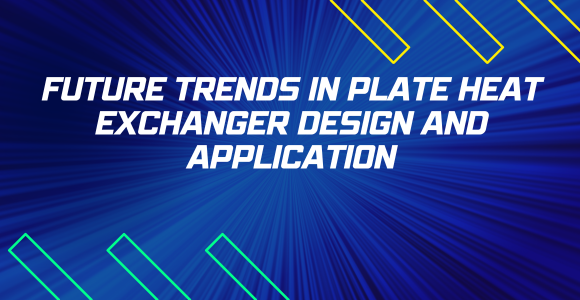In the realm of industrial heat exchange, plate heat exchangers (PHEs) stand as stalwarts, revolutionizing thermal management across diverse sectors. As we step into the future, the trajectory of PHE design and application is poised for remarkable evolution, driven by innovation and sustainability. Exploring these burgeoning trends in collaboration with Pragya Associates illuminates the path towards enhanced efficiency and environmental stewardship.
- Sustainable Materials Integration: In response to escalating environmental concerns, future PHE designs will pivot towards sustainable materials integration. Pragya Associates leads the charge in advocating for eco-conscious solutions, promoting the adoption of recyclable materials and bio-based polymers in PHE construction. By championing sustainable sourcing practices, PHE manufacturers can reduce their carbon footprint and contribute to a circular economy.
- Advanced Thermal Performance: As industries demand heightened thermal efficiency, future PHEs will integrate advanced technologies to optimize heat transfer capabilities. Pragya Associates spearheads research initiatives aimed at enhancing thermal conductivity and turbulence within PHE channels. Using computational fluid dynamics (CFD) simulations and experimental validation, Pragya Associates pioneers innovations that push the boundaries of thermal performance.
- Modular and Customizable Designs: The future landscape of PHEs will witness a paradigm shift towards modular and customizable designs, catering to diverse application requirements. Pragya Associates advocates for adaptable PHE configurations that facilitate seamless integration into existing infrastructures. By leveraging modular assembly techniques and computational design tools, Pragya Associates empowers industries to tailor PHEs to their specific operational needs, promoting flexibility and scalability.
- IoT Integration for Predictive Maintenance: In the era of Industry 4.0, PHEs will embrace IoT integration for predictive maintenance, ensuring uninterrupted performance and longevity. Pragya Associates collaborates with tech innovators to develop smart sensor networks embedded within PHE systems. By harnessing real-time data analytics and machine learning algorithms, Pragya Associates pioneers predictive maintenance strategies that preemptively identify potential issues, minimizing downtime and optimizing operational reliability.
- Embracing Electrification and Renewable Energy: In alignment with global efforts to decarbonize industries, future PHE applications will embrace electrification and renewable energy sources. Pragya Associates promotes the integration of PHEs into sustainable energy systems such as solar thermal and geothermal. By harnessing the inherent versatility of PHEs, Pragya Associates catalyzes the transition towards greener energy alternatives, fostering a more sustainable energy landscape for future generations.
In collaboration with Pragya Associates, the future of plate heat exchanger design and application unfolds with boundless potential. By embracing sustainability, advancing thermal performance, and harnessing cutting-edge technologies, Pragya Associates paves the way for a paradigm shift towards more efficient, adaptable, and environmentally conscious heat exchange solutions. We embark on a journey toward a future where innovation and sustainability converge to redefine thermal management.




